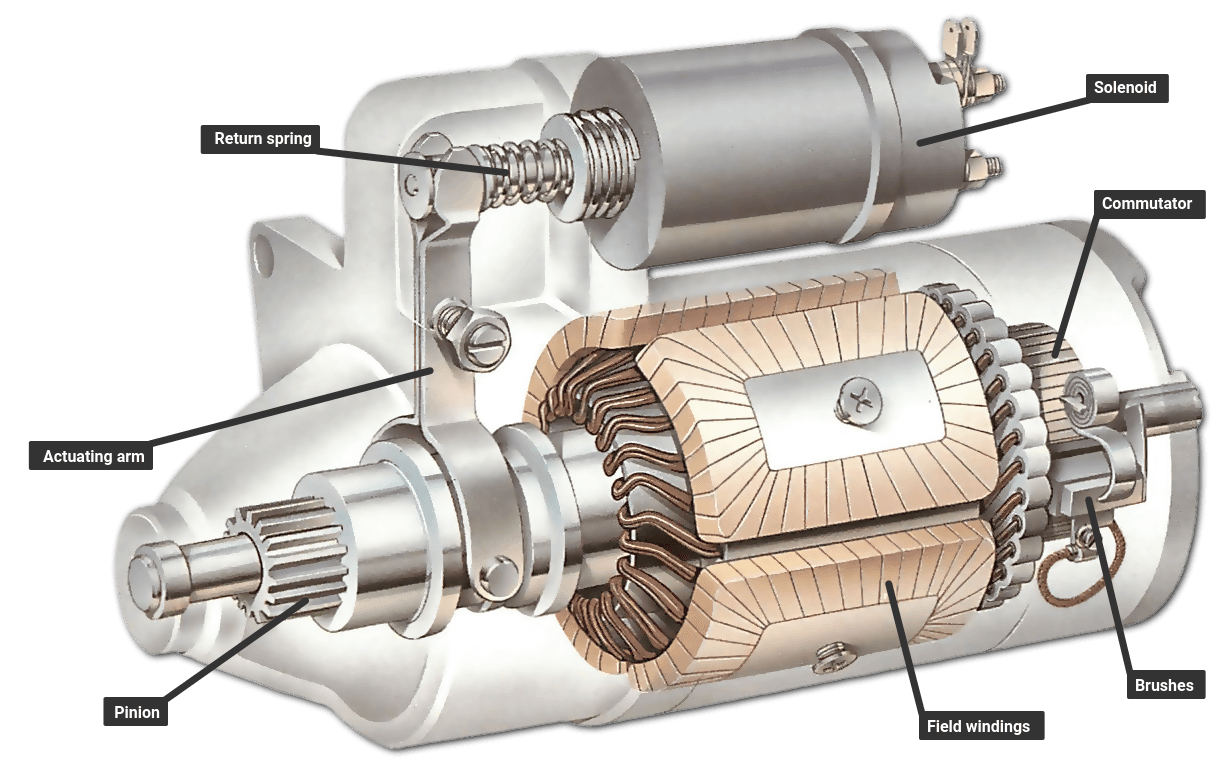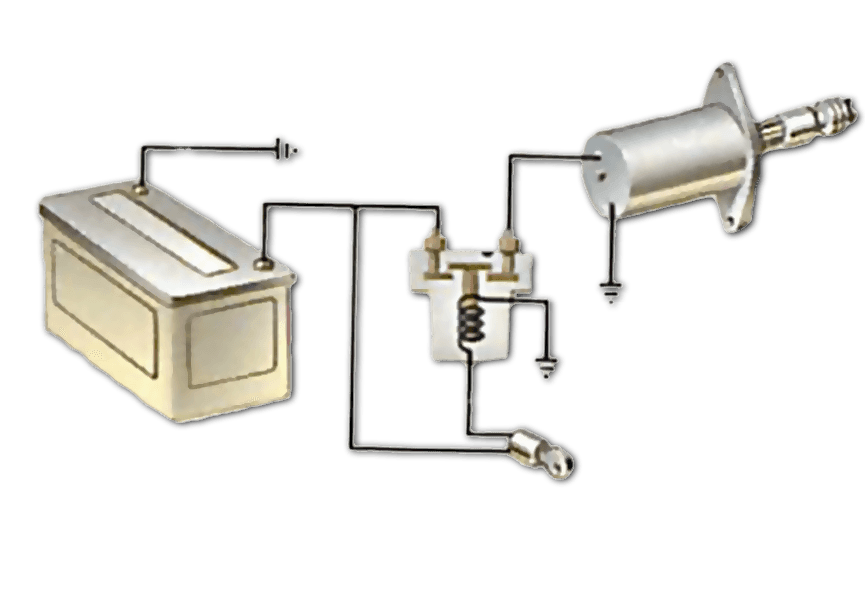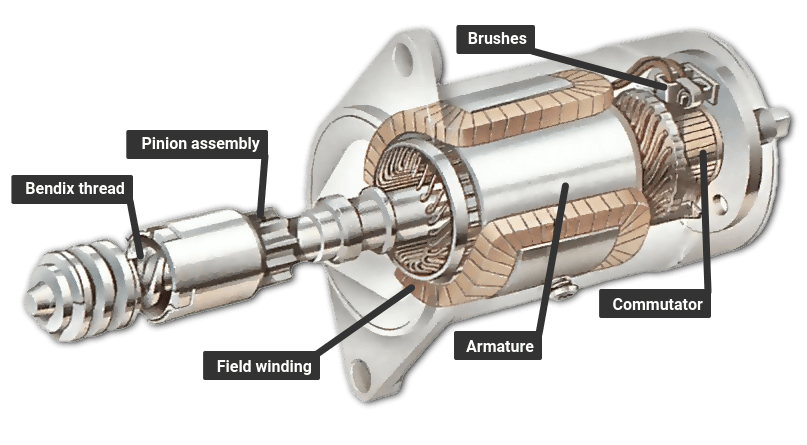How to Remove a Starter Idler Gear Shaft on My V Star Motorcycle UPDATED
How to Remove a Starter Idler Gear Shaft on My V Star Motorcycle
Pre-engaged starter

To brand an engine commencement it must be turned at some speed, so that it sucks fuel and air into the cylinders , and compresses it.
The powerful electrical starter motor does the turning. Its shaft carries a small pinion ( gear bicycle) which engages with a large gear band around the rim of the engine flywheel .
In a front-engine layout, the starter is mounted depression downwardly near the dorsum of the engine.
The starter needs a heavy electric current , which it draws through thick wires from the bombardment . No ordinary hand-operated switch could switch it on: it needs a large switch to handle the loftier current.
The switch has to be turned on and off very apace to avert dangerous, damaging sparking. And so a solenoid is used - an arrangement where a small switch turns on an electromagnet to complete the circuit .
The starter excursion

The starter switch is commonly worked by the ignition key. Turn the key beyond the 'ignition on' position to feed current to the solenoid.
The ignition switch has a return spring , so that as soon as you release the key it springs dorsum and turns the starter switch off.
When the switch feeds electric current to the solenoid, the electromagnet attracts an iron rod.
The movement of the rod closes two heavy contacts, completing the excursion from the bombardment to the starter.
The rod also has a return spring -when the ignition switch stops feeding current to the solenoid, the contacts open up and the starter motor stops.
The return springs are needed considering the starter motor must not turn more than than it has to in order to start the engine. The reason is partly that the starter uses a lot of electricity, which quickly runs down the battery.
Also, if the engine starts and the starter motor stays engaged, the engine will spin the starter then fast that it may be badly damaged.
The starter motor itself has a device, chosen a Bendix gear, which engages its pinion with the gear band on the flywheel simply while the starter is turning the engine. Information technology disengages as soon as the engine picks up speed, and there are two ways by which it does and then - the inertia system and the pre-engaged organisation.
The inertia starter relies on the inertia of the pinion - that is, its reluctance to begin to plough.
Inertia system

The pinion is not fixed rigidly to the motor shaft - it is threaded on to it, similar a freely turning nut on a very coarse-thread bolt.
Imagine that you all of a sudden spin the bolt: the inertia of the nut keeps it from turning at once, so it shifts along the thread of the bolt.
When an inertia starter spins, the pinion moves forth the thread of the motor shaft and engages with the flywheel gear ring.
It then reaches a end at the stop of the thread, begins to plough with the shaft and and then turns the engine.

Once the engine starts, it spins the pinion faster than its own starter-motor shaft. The spinning action screws the pinion back downwards its thread and out of engagement.
The pinion returns so violently that there has to be a stiff spring on the shaft to absorber its impact.
The violent engagement and disengagement of an inertia starter can crusade heavy wear on the gear teeth. To overcome that problem the pre-engaged starter was introduced, which has a solenoid mounted on the motor.
In that location'due south more to a machine starter system: As well equally switching on the motor, the solenoid also slides the pinion along the shaft to engage information technology.
The shaft has straight splines rather than a Bendix thread, so that the pinion always turns with it.
The pinion is brought into contact with the toothed ring on the flywheel by a sliding fork. The fork is moved by a solenoid, which has two sets of contacts that close i later on the other.
The commencement contact supplies a depression current to the motor so that it turns slowly - just far plenty to let the pinion teeth appoint. Then the second contacts close, feeding the motor a loftier electric current to turn the engine.
DOWNLOAD HERE
How to Remove a Starter Idler Gear Shaft on My V Star Motorcycle UPDATED
Posted by: samuelporm1978.blogspot.com

Comments
Post a Comment